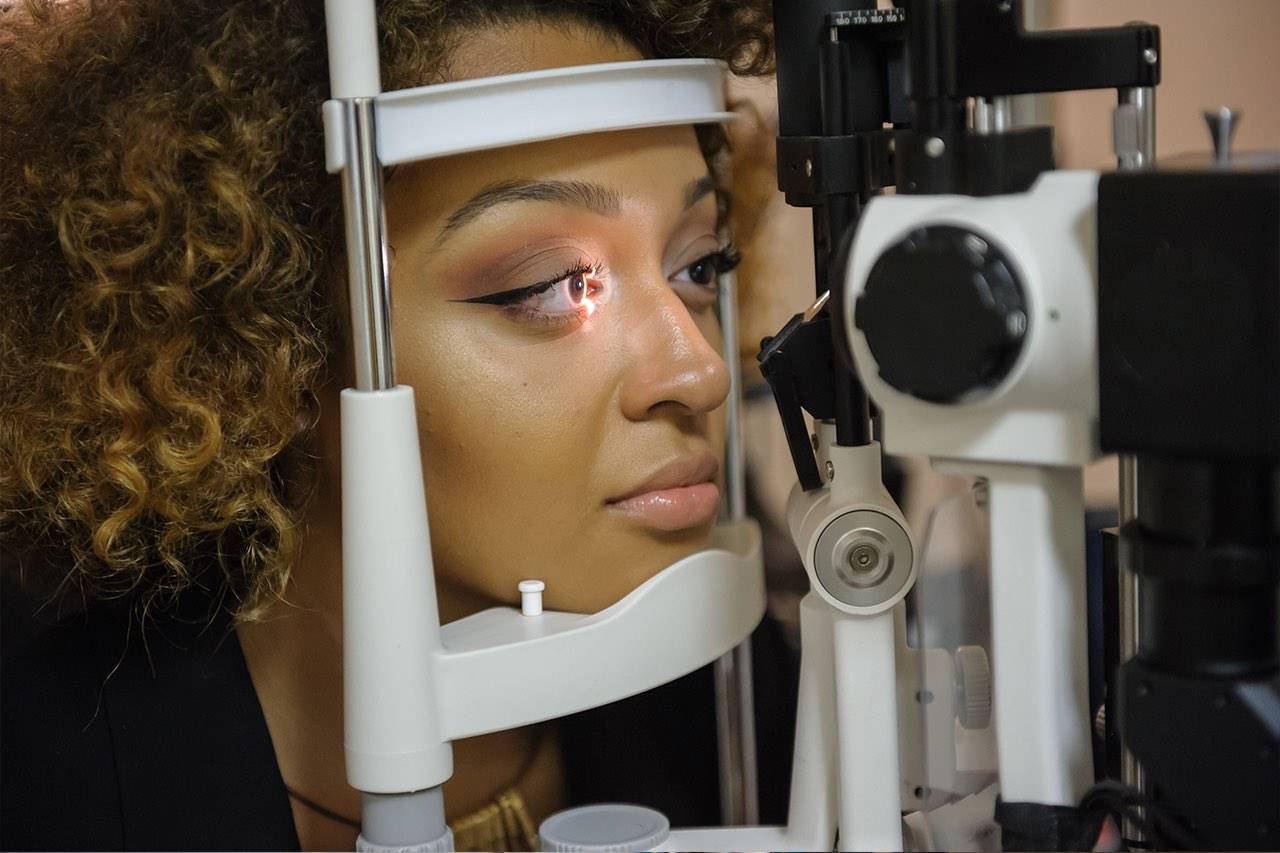 Examination
Examination
Eye injuries can occur at any time. Our office is equipped to handle most eye injuries. The primary instrument we use is a biomicroscope, sometimes referred to as a slit lamp. The biomicroscope has a high magnification and is particularly designed to aid us in evaluating the extent of an eye injury. Whether it is a laceration, foreign particle embedded or a burn, the biomicroscope is the primary tool to carefully examination the injury.
Embedded Foreign Bodies
A common injury is a hot iron metalic foreign body embedded in the cornea. Grinding or drilling in iron or other metals will release particles that are hot and when they hit the eye they embed themselves in the cornea. If it is iron, as in this example, it will immediatley begin to rust due to the salty consistency of our tears. When the metal particle is removed, there is a remaining rust deposit that has infiltrated the surrounding cornea. We have experience at removing these rust spots. With proper medical treatment these injuries resolve well.
If the foreign particle was embedded in the central visual axis of the cornea, there may be a scar remaining which could effect the patients ultimate visual acuity. Safety glasses are always recommended to prevent these type of injuries.
Retinal Trauma
Contusions, otherwise referred to as a "black eye" can result in more than just the obvious bruises on the face. The retina is the nerve tissue that senses light which lines the back of the eye. There is a blood vessel layer under the retina. This is very delicate and sensitive tissue.
Retinal Hemorrhages
A compression type of injury can knock the retina loose and cause bleeding underneath. These examples show both retinal hemorrhage and retinal detachment. Both can result in blindness to the effected eye. Immediate examination and subsequent treatment is needed in these type of injuries.
Emergency Eye Care
If you have symptoms of "Flashes of Light" in your vision, when there is no light to explain the flashes, this could mean that there is something happening on the back of the eye. The eye does not have any pain sensors so flashes are your best clue that there is something wrong. In contrast the cornea (the clear window on the front of the eye) has more nerve pain sensors that any other part of the body. Injury to the cornea can be incredibly painful. However, in both cases, immediate treatment is needed. Our office staff is well trained to know how to expedite the treatment of these type of injuries. Call immediately when an injury occurs. we are here to help.
For emergencies call us at: 419-782-EYES (3937)
